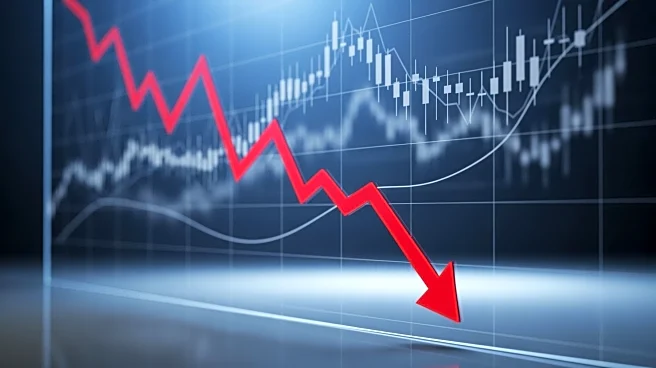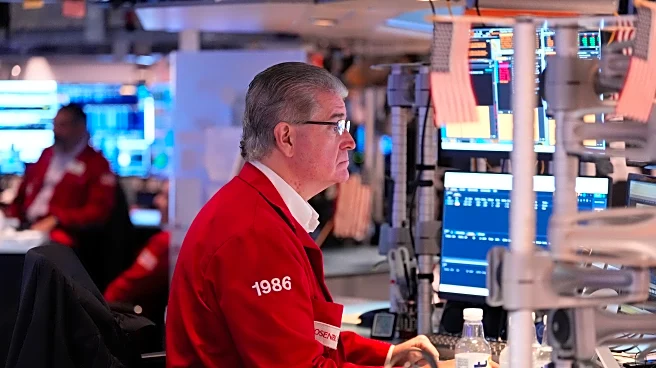What's Happening?
On Friday, Wall Street experienced significant volatility, initially marked by a sharp decline in major indices. The S&P 500 began the day with a 1.3% drop but managed to recover, closing with a slight dip of 0.1%. The Nasdaq composite reversed its losses
to gain 0.1%, while the Dow Jones Industrial Average reduced its earlier loss of nearly 600 points to 309 points, or 0.7%. The fluctuations were largely driven by movements in tech stocks, particularly Nvidia, which saw its stock price swing from a 3.4% loss to a 1.8% gain. This volatility is attributed to ongoing concerns about the valuation of AI-related stocks and broader market conditions. Additionally, the market is reacting to potential changes in interest rates, with the Federal Reserve having already cut rates twice this year to support the slowing job market.
Why It's Important?
The recovery of the stock market from its morning losses highlights the ongoing volatility and investor sensitivity to tech stock valuations and interest rate changes. Nvidia's significant influence on the market underscores the impact of AI-related stocks on broader indices. The Federal Reserve's interest rate decisions are crucial, as lower rates can make stocks more attractive compared to bonds, potentially driving up stock prices. However, the possibility of inflation remaining above the Fed's target complicates further rate cuts. This situation affects a wide range of stakeholders, including investors, companies reliant on tech stock performance, and policymakers monitoring economic stability.
What's Next?
Investors are closely watching upcoming earnings reports, particularly from Nvidia, which could significantly influence market trends. The Federal Reserve's next meeting in December is also pivotal, as it may determine whether another rate cut is feasible. Market participants are weighing the potential benefits of lower rates against the risk of exacerbating inflation. Additionally, global market conditions, such as the U.K.'s fiscal policy decisions, could have ripple effects on U.S. markets.














